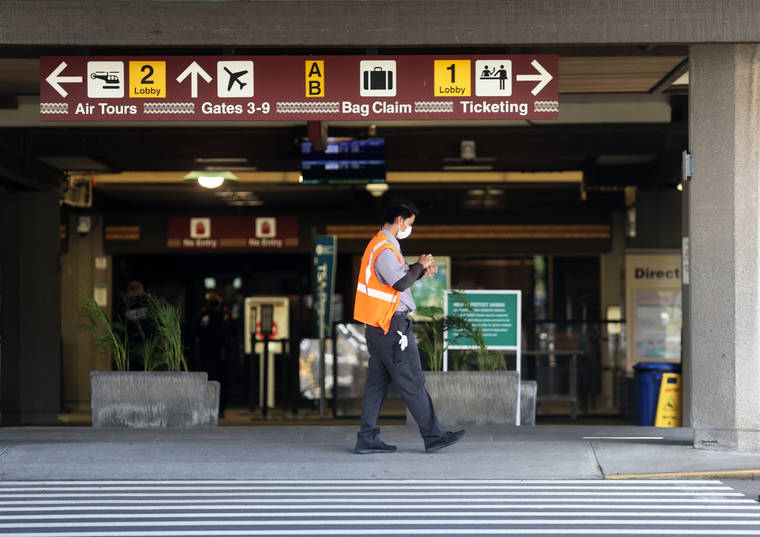State officials are clamping down on interisland travel in an effort to steer Hawaii away from the precipice of a medical crisis.
Gov. David Ige announced after a press conference Thursday that, starting Tuesday, all travelers arriving on the Big Island, Maui and Kauai will be required to quarantine for 14 days after disembarking, or until the end of their stay at their destination, whichever comes first. This decision, he said, is to protect the neighbor islands from a major spike in COVID-19 cases on Oahu.
“I wish this was not necessary,” Ige said. “But the health and safety of our community remains our highest priority.”
Under the new restriction, a traveler between the Big Island and Maui or any other neighbor island would have to quarantine at their destination, but a traveler from the Big Island to Oahu would not. However, travel from Oahu to any neighbor island would also result in a quarantine.
The new interisland quarantine requirements are scheduled to end Aug. 31.
So far, Ige said the state is still on schedule to loosen quarantine restrictions Sept. 1 for out-of-state travelers — wherein those with a negative COVID-19 test taken less than three days before arrival can waive the quarantine requirement — although he said he will make another announcement regarding that deadline next week.
The Thursday press conference took a much grimmer tone than previous conferences. Health Director Bruce Anderson announced that the state is on the verge of running out of hospital beds as the number of COVID-19 cases continues to rise.
On Thursday, 152 new COVID-19 cases were reported statewide, 148 of which were on Oahu. Two more patient deaths also were reported Thursday, both on Oahu, bringing the statewide total to 29.
One new case was reported on the Big Island, and another three were reported on Maui. The total number of cases statewide is 2,914.
Anderson said, based on the increasing number of cases in the past week, the state Department of Health projects there will be more than 500 new cases daily by the end of the month if drastic measures are not taken.
Anderson also highlighted an even more pressing matter: Based on current projections, Oahu will run out of open intensive care units by Aug. 19.
While Anderson said the neighbor islands are in a better position, with much fewer daily cases, they also have more fragile medical infrastructure, with lower capacities to deal with a large influx of cases.
In an effort to halt the spike in cases on Oahu, Honolulu Mayor Kirk Caldwell announced a wide range of new restrictions under the name “Act With Care, Do Not Gather” that take effect at 12:01 a.m. Saturday until Sept. 5.
“All city and county parks on the island of Oahu, 300 of them, will be closed,” Caldwell said. “The beaches fronting our parks will be closed. All state parks on the island of Oahu will be closed, including state beach parks and the beaches fronting those parks.”
Honolulu Police Chief Susan Ballard announced that law enforcement will be increasing efforts to ensure compliance with the new restrictions, including a COVID-19 hot line that people can call to report gatherings. Ballard said the police also will conduct patrols watching for illegal social gatherings, at a cost of about $13 million.
For now, none of the new restrictions apply to neighbor islands.
However, Mayor Harry Kim said Thursday that he suggested to Ige that the University of Hawaii not allow out-of-state students to return for the entire fall semester, limiting in-person classes to local students only and conducting the remainder of classes online.
Ige said Thursday he will make an announcement relating to schools and the university “soon,” pending further discussion with state Department of Education and UH officials.
Email Michael Brestovansky at mbrestovansky@hawaiitribune-herald.com.






